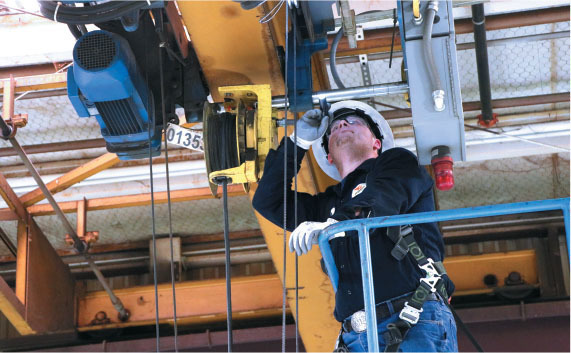When automation first grew more widespread, the crane and overhead handling systems category was slow to adopt out of safety concerns. With time and more advances, however, that perspective has changed. Today, safety is the primary reason automation is being increasingly embraced in the field.
“With the technologies that are out there now, you’re much more apt to desire automation, and even require some form of automation, because when you automate a process or machinery, you can also add safeties in,” said Dan Beilfuss, general manager for MHI member Magnetek.
Beilfuss is president of the Crane Manufacturers Association of America, an independent trade association affiliated with the Material Handling Industry. Molly Wood, vice president of the CMAA and engineering manager for MHI member Ace Industries, said automation is part of an ongoing, decades-long effort to make the operation of cranes and overhead handling safer for workers.
“The ability to get the worker further away from the load has been something that our industry has always been very interested in,” Wood said. “We want to know—how can our operator safely operate the crane and how can they have a clear line of sight? This industry as a whole has always been heavily interested in making very safe environments in the facilities where we put cranes.”
For crane users, automation can bring systemic, ingrained checks and balances that do not rely on the operator to always ask, “Am I safe to make this next move? Am I clear of all obstructions? Do I have a clear path?”
“If you get that built into the sensors and technology in the crane, the crane can do that for you, and ultimately result in a safer operation, which makes it safer for the facility and the people that work in the facility,” Beilfuss said.
Automation is not just about the operation of equipment—it’s also about the status of the equipment. New sophisticated technology tools have strengthened preventive maintenance in the crane and overhead handling field, helping to alert workers to potential issues before they occur—playing a key role in improved safety.
“By adding technology to the crane and putting some level of automation in place, you can actually program a safety algorithm, or you can program a set of safety steps that an operator could run or a maintenance crew could run before the start of a shift or every so many days to ensure the health of your system,” Beilfuss said.
Click here to read the full article.
 MHI Solutions Improving Supply Chain Performance
MHI Solutions Improving Supply Chain Performance

